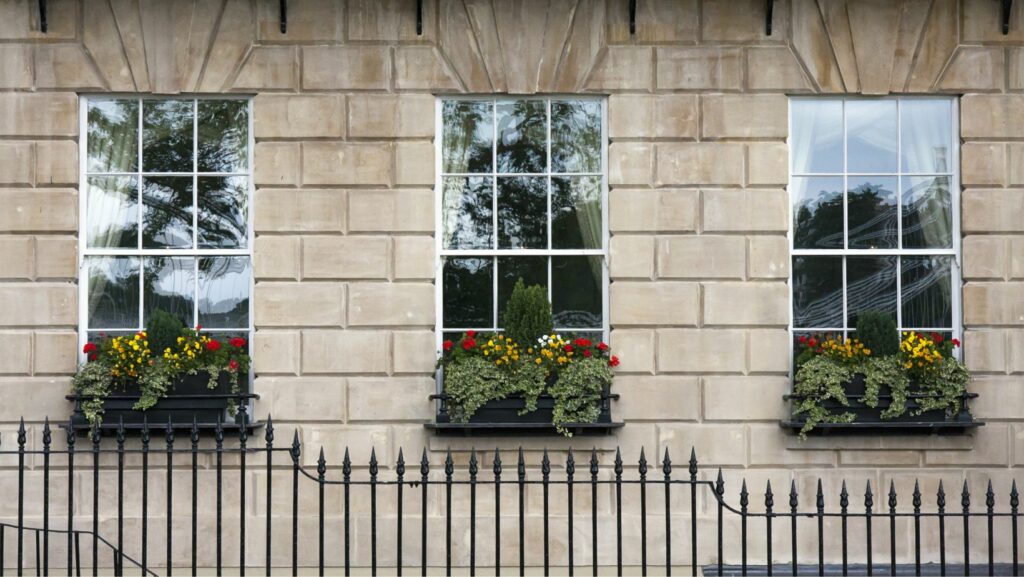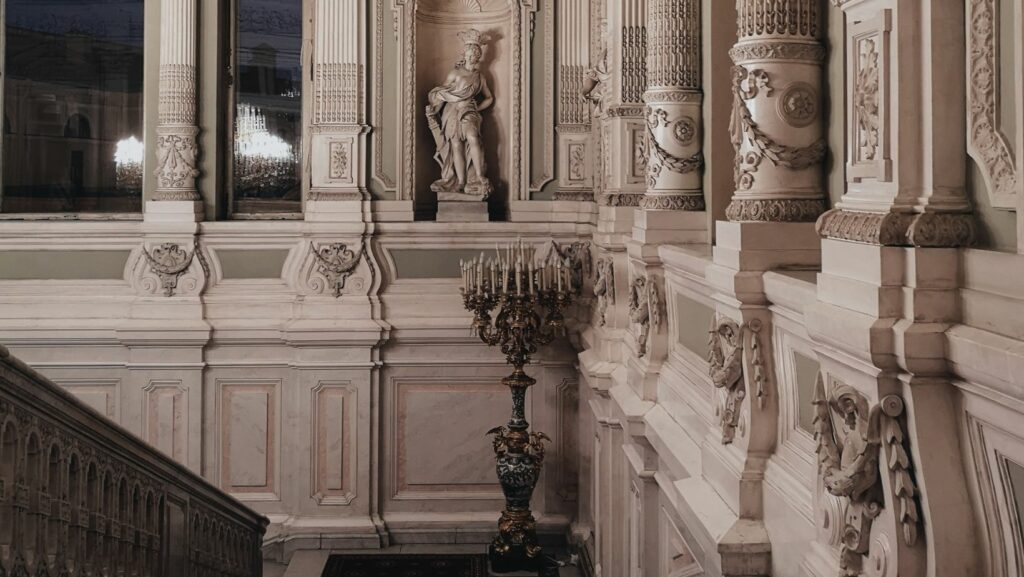Step into the world of Georgian interior design, a realm where elegance meets simplicity, and history blends seamlessly with style. This design aesthetic, hailing from the 18th century Britain, continues to captivate homeowners with its timeless charm.
Georgian design is revered for its harmonious balance between form and function – a testament to its enduring appeal. Whether you’re a design enthusiast or a homeowner seeking inspiration, understanding the nuances of Georgian design can add a touch of classic elegance to your space.
Georgian Interior Design

The charm of Georgian interior design lies in several distinct elements. Understandably, balance and symmetry govern it, as seen in the identical windows, decorations, and furniture arrangements. Notably, classical inspirations influence the architecture, with columns, friezes, and pediments featuring prominently.
Colors, too, play a pivotal part. They prefer a muted palette—soft hues of blue, green, and peach dominate, injecting serenity into spaces. Equally important is the use of richly textured fabrics in silk or velvet, adding a touch of opulence.
In Georgian design, lighting acquires a special status. Chandeliers, known for their intricate designs, often hang from the ceiling, while sconces adorn walls. Additionally, large mirrors get strategically placed to reflect light, thereby amplifying the sense of space.
Quality woods like mahogany, walnut, and oak shape the furniture of this period, hinting at its durability and lasting effect. Finally, decorative objects find a place, too, be it china, silverware, or ornate fireplaces, further enhancing the room’s overall aesthetic.
Materials and Textures in Georgian Design
In the realm of Georgian interior design, materials played a crucial role. Quality hardwoods such as mahogany, walnut, and oak were the fabric of choice, forming the backbone of furnishings. Soft textiles, like silk and velvet predominated, often in rich tones and intricate patterns. Craftsmanship reigned in this period, with many pieces hand-carved or hand-painted.
Subheading 1: Use of Wood in Georgian Design

Hardwoods such as mahogany served as the basis for furniture, often flaunting decorative veneers. George Hepplewhite, for example, created refined designs exhibiting the beauty of the wood grain.
Subheading 2: Fabric and Textiles in the Georgian Era
Fabric was important, too. Silk, velvet and tapestry materials adorned walls and furniture, adding to the detailed aesthetic. Williamsburg patterns – large-scale florals or intricate botanical designs – were popular.
Subheading 3: Decorative Details
Highly embellished detail was a mark of Georgian interiors. Gilding, fretwork, and carvings featured on furniture and fittings, showcasing craftsmanship and attention to detail. Ornate mirrors, typically with gold frames, further enhanced the opulent feel.
Subheading 4: Georgian Color Palette
The color palette in Georgian design was sophisticated and understated. Soft hues like sage green and sky blue, combined with creams and pale yellows, were the norm. These colors served as a backdrop to the lavish furnishings and rich textile treatments commonly seen.
Influence of Georgian Design in Modern Interiors

The Georgian design resonates in modern interiors, forging a bridge between the past and the present. Distinct Georgian elements emerge in contemporary designs, sustaining the period’s cultural significance. Balance and symmetry, the twin pillars of Georgian design, reappear in modern floor layouts. Classical architecture, another hallmark, takes form through usage of columns and pediments, not uncommon in plush hallways and grand foyers. The soft color palette translates into modern rooms subtly, with hues like sage green and sky blue often paired with creams and pale yellows for a strikingly sophisticated aesthetic.
Modern furniture styles also manifest the Georgian influence. The robust nature of Georgian furniture, characterized by quality hardwoods and intricate craftsmanship, finds a counterpart in contemporary solid-wood furniture. Patterns from this era, especially on choice fabrics like silk and velvet, grace today’s cushion covers, curtains, and upholstery, adding an opulent touch. Fireplaces, a significant Georgian element, frequently serve as focal points in modern homes, providing warmth while augmenting aesthetic grandeur.
Successful interior designs of the present owe significantly to the Georgian era. Incorporating elements from this century creates homes that exude timeless elegance, echoing a past full of artistic achievements while answering today’s functional needs.



